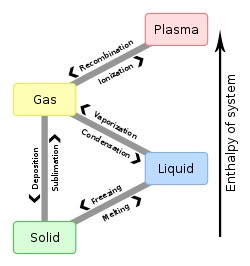It has been suggested that this article be merged into Supersolid . (Discuss) Proposed since June 2025. |
A superglass is hypothetical phase of matter which is characterized by superfluidity and a frozen amorphous structure at the same time. [1] This idea was put forward by Anthony James Leggett in 1970. [1] [2]
In 2009, J.C. Séamus Davis theorised that frozen helium-4 (at 0.2 K and 50 atm) may be a superglass. [1] [3] [4]
